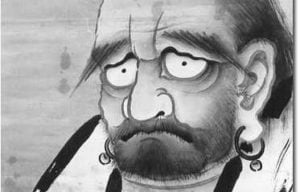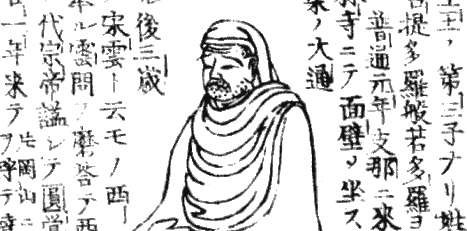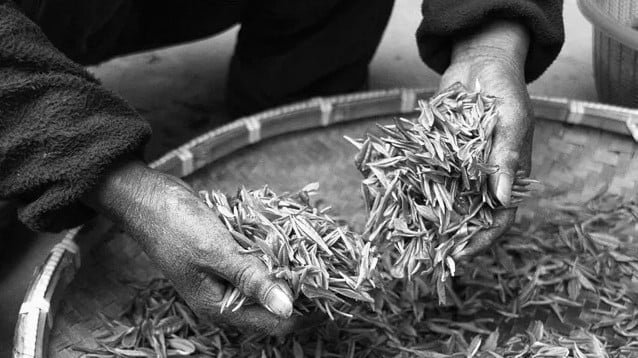Throughout history, tea, Camellia sinensis, was intimately related to deities, demi gods, and mortals. In Japan, the monastic use of tea as an aid to meditation and mindfulness was celebrated by linking the plant and its origins to Bodhidharma, Daruma 達摩.
In this Article
Bodhidharma, (Chinese: Ta Mo; Japanese: Daruma 達摩) was a Buddhist monk who traveled from India to China during the 5th or 6th century. Ferociously ugly, with piercing blue eyes and wild curly hair, the monk is known as the founder of Ch’an ZenBuddhism and of the Shao Lin fighting arts.
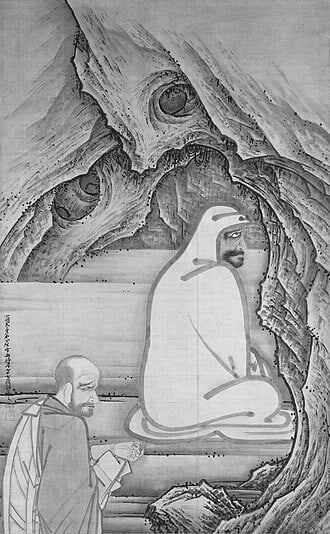
Zen
Mark Schumacher, explains: Zen is the term used in Japan, but Daruma’s philosophy arrived first in China, where it flowered and was called Chan Buddhism. Only centuries later does it bloom in Japan, where it is called Zen.
Practically nothing is known about Bodhidharma or his teachings. Early Chinese texts provide scant information, except to say he was a pious monk from India, who came to China and introduced a form of meditation that involved “gazing at cave walls”.
According to the Japanese legends, Daruma’s arms and legs supposedly atrophied, shriveled up, and fell off during his nine-year meditation period facing a cave wall in China. During that time, Japanese legend also credits Bodhidharma with the introduction of green tea, which was used to ward off drowsiness during lengthy zazen (zen meditation, quiet sitting) sessions.
Daruma 達摩
Beginning sometime in the 16th century, red-colored Daruma images became popular talismans to protect children against smallpox (the smallpox god was said to like the color red, and could therefore be pacified by red offerings). By the 18th century, red-colored Daruma dolls (with no arms, legs and blind- no pupils) were also sold to ward off smallpox. Smallpox disappeared after vaccination was introduced to Japan in the Meiji period (1868-1912), but the bright red Daruma dolls remained extremely popular as good – luck charms – today they are one of Japan’s most ubiquitous icons of good fortune.”
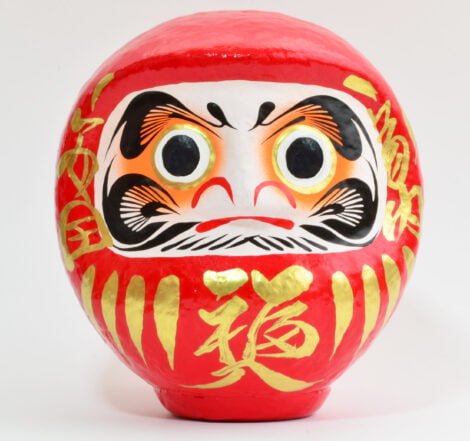
Although the traditional and most typical is red (and secondly, white), nowadays darumas of different colors with different meanings have been emerging.
- Red: Good luck and fortune.
- Violet: Health and longevity.
- Yellow: Security and protection.
- Gold: Wealth and prosperity.
- White: Love and harmony.
- Pink: Romantic love and personal relationships.
- Green: Health.
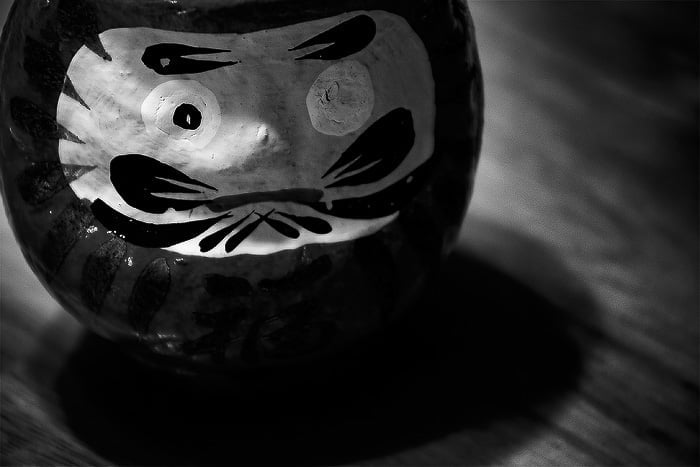
Daruma Dolls are
armless, legless, & blind (no pupils).
One of modern Japan’s most poplular talismans of good luck. People paint in the left eye when they make a wish.
Paint in the right eye when your wish is granted.
Since Daruma dolls appeared without any bodily appendages, they lent themselves easily to phallic symbolism. Says Bernard Faure:
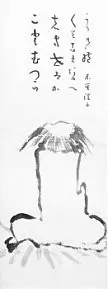
“Until the Meiji period, phallic representations of Daruma in stone or papier mache were sold. The name Daruma was also a nickname given in the Edo period to prostitutes, perhaps because, like the doll, these specialists of tumble could raise the energy of their customers.
Daruma is indeed often represented [in artwork] in comical fashion in the company of a prostitute … or as part of a legitimate couple called Mr. and Mrs. Daruma … these Daruma dolls protected children against illnesses and were supposed to facilitate childbirth, bring good harvest, and more generally bring prosperity to their owners.”
The list of Daruma’s roles is seemingly endless. He also serves, for example, as a talisman for sericulture and is thus connected with silkworms. Additionally, Japan’s medieval Tendai sect claims that Bodhidharma did not return to India but journeyed onward to Japan, where he met Prince Shōtoku Taishi (574 – 622 AD), the first great patron of Buddhism in Japan, and from this association, Daruma is also linked (in Japanese myth) to horses and monkeys.
How Tea came to Japan
Daruma made the pledge of 7 years of meditation. He vowed not to sleep in these 7 years. Despite this vow, he fell asleep one night. When he woke up the next morning, he was so angered by his failure, that he cut off his eyelids and threw them to the ground.
As soon as the eyelids touched the soil, immediately there grew roots which soon developed into a large bush. When Daruma saw this wonder, he prepared himself a drink out of the leaves.
People came from all around to see him and many followed the monk and prepared a drink from the leaves. The knowledge of the drink’s refreshing and invigorating effect was spread everywhere. The delicious taste and scent were reason enough to see this drink as “divine”.

In Japan there is this saying, which means something like “Fall down seven times, stand up eight”. It’s a way of saying that you should continue fighting despite adversity.
七転び八起き – Nanakorobi yaoki
Thanks to its rounded shape, the daruma doll never falls even if we move it. It always returns to its position. They never give up. The daruma dolls serve as a reminder or motivation that even if things go wrong or adversities arise, even if you fall, if you persevere things will end up going better, you will be able to overcome adversities, you will rise again.
*Guest Post introduction by earthstOriez.*
Keep exploring:
~ ○ ~
Works Cited & Multimedia Sources
- Porter Bill. The Zen Teaching of Bodhidharma. 1987.
- Schumacher Mark. DARUMA. Father of Zen Buddhism. From Buddhahood to Brothel, From Saint to Sinner.
- Dumoulin Heinrich. Zen Buddhism: A History. 1988.
- Bodhidharma (Daruma), 15th C. by Shōkei (Keishōki) 祥啓 (d. 1518?) Nanzenji Temple 南禅寺, Kyoto.
- Faure Bernard. The patriarch who came from the west.
- Tokeiji Temple, 東慶寺 (Kamakura), by Shaku Sōen 釈宗演 1860-1919. Menpeki (Wall Gazing) Daruma from the rear.
